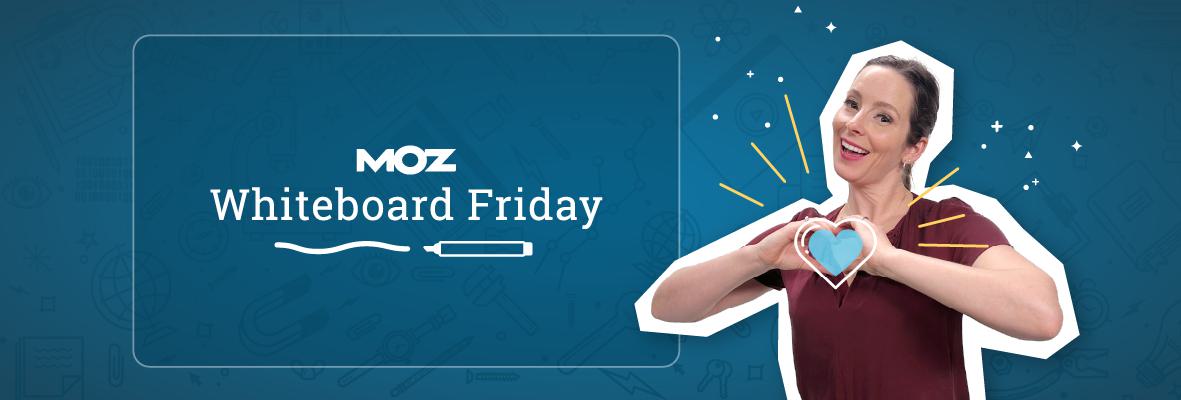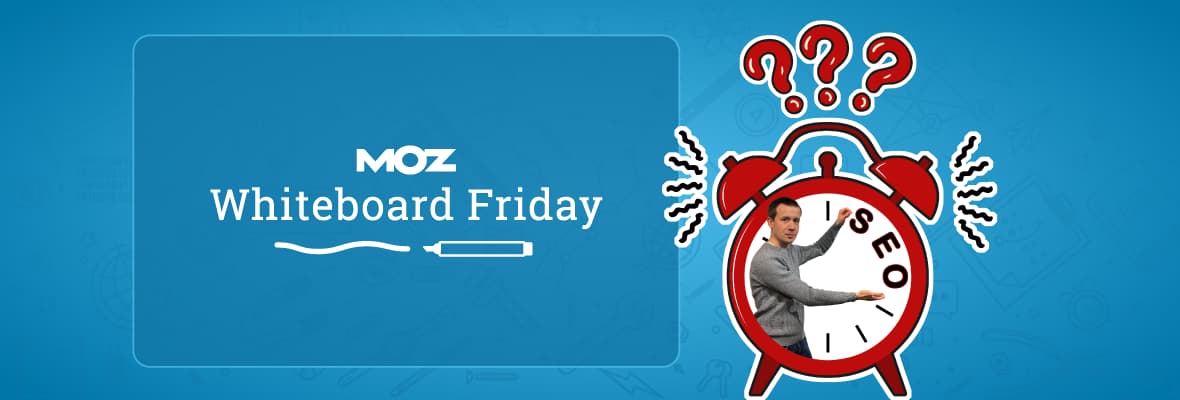

SEO Content Has a Packaging Problem — Whiteboard Friday
In this episode, Bernard explains why SEO content has a packaging problem, introducing concepts such as perspectives to help address the issue.
Howdy Moz fans! Welcome to Whiteboard Friday, the longest-running and most popular SEO video series. Featuring industry experts as guest hosts who share their hands-on SEO experience working with agencies, businesses, and consultancies. Each weekly episode delivers actionable SEO training to help you advance your career and master digital marketing.
Browse our curated favorites or check out the latest episodes below to stay on top of SEO best practices.
Brand Entity and SEO : Learn how to transform your brand from a digital unknown into a recognized entity in Google's Knowledge Graph.
The Value of SEO Beyond Traffic and Leads : Discover why SEO should be viewed as your website's foundation rather than a set-and-forget tactic, and learn to communicate its full business impact.
Top SEO Tips for 2025 : Chima shares essential strategies for navigating SEO in an AI-driven landscape, helping you adapt and thrive in this transformative year.


In this episode, Bernard explains why SEO content has a packaging problem, introducing concepts such as perspectives to help address the issue.


What's changed between 2021 and 2025? Is everything different? Think again! In this new series, Jo Cameron and Cyrus Shepard discuss his popular Whiteboard Friday episode to find out what tactics are still relevant and what the future holds.
![How to Create an SEO Forecast [Free Template Included] — Whiteboard Friday](https://moz.rankious.com/_moz/images/blog/banners/WBF-SEOForecasting-Blog_Header.png?auto=compress%2Cformat&fit=crop&dm=1694010279&s=318ed1d453ed4f230e8e4b50ecee5417)
Learn how to forecast and demonstrate the value of your SEO efforts in this week's Whiteboard Friday and put it into practice with a free worksheet. Tom Mansell talks about quantifying predicted SEO value, closing performance gaps, and calculating ROI.


Site migrations can be tricky! Rebecca Yu shares essential strategies for SEO professionals to clearly explain the process and potential impacts to non-SEO clients. Learn how to bridge the communication gap, accurately identify when a migration is happening, and ensure a smoother transition for everyone.


Unlock the accessibility advantage and boost your SEO with Lyssa’s Whiteboard Friday. Discover how creating a user-friendly website for everyone can significantly improve your search rankings and user experience.


SEO coach Tazmin Sulliman shares her four-step framework for redesigning your career with authenticity. Learn how to set achievable goals, manage stress with her BRAVE technique, and celebrate your wins along the way. Remember—you're not starting from scratch, you're redesigning with purpose!

Learn how to transform your brand from a digital unknown into a recognized entity in Google's Knowledge Graph. Jes Scholz's Whiteboard Friday guides you through three essential steps: crafting a clear brand identity, implementing proper schema markup, and building meaningful connections that boost your visibility across Google's ecosystem.


Is SEO the right move for your business right now? This week's Whiteboard Friday video from Tom Capper tackles a fundamental question: when is the optimal time to do SEO, and what kind of SEO should you focus on? Get practical insights on essential elements like web presence and runway, plus considerations for brand building and content creation.


In this episode of Whiteboard Friday, Britney discusses actionable AI, how to get started, and the steps needed to make that happen.


Looking to take your product and solutions pages to the next level? In this week’s episode of Whiteboard Friday, Liraz talks us through how we can optimize our product pages in the multi-search engine optimization. She provides a detailed breakdown of page structure and how to bridge the gap between product and SEO.

When you're set up for success, being a mentor can be a rewarding experience for you and your mentee. Miracle’s in-depth framework presented in this week’s Whiteboard Friday covers considerations like building trust, setting boundaries, and the qualities that make a great mentor.


Have you ever found the idea of repurposing content overwhelming? Maybe you just don’t know where to start when it comes to reaching new audiences with your existing content. In this episode of Whiteboard Friday, Caitlin walks us through how AI can help get you over that creative block and get started.


In this Whiteboard Friday, Garrett discusses AI Overviews and how to optimize your SEO strategy for this new super-charged AI-powered search ranking snippet.


The SEOFOMO newsletter grew to 36.6K subscribers in just 5 years, and now its creator is here to give you 7 tips to replicate her success. Join Aleyda Solis as she talks through what worked and what didn’t when launching her extremely successful set of email newsletters.